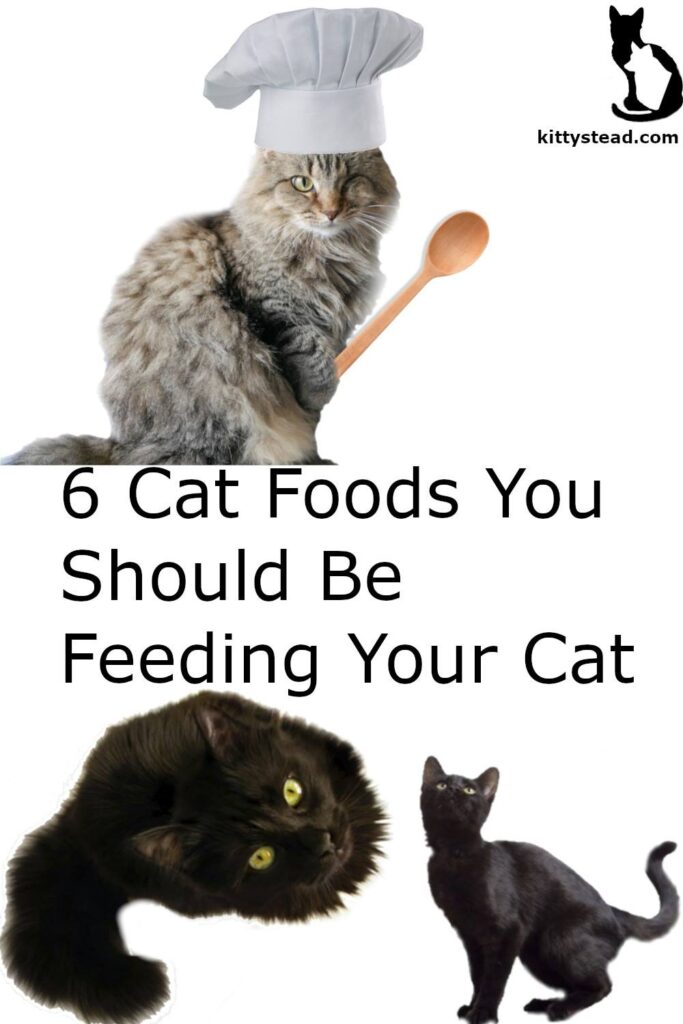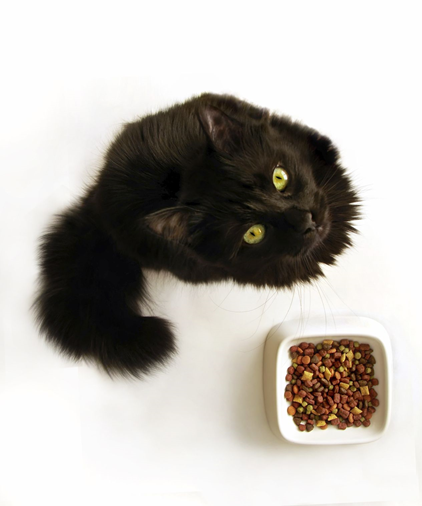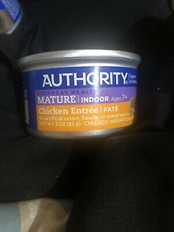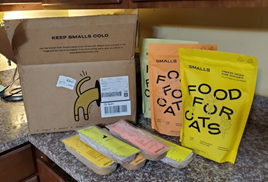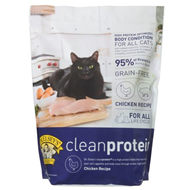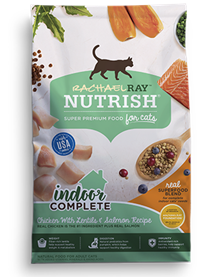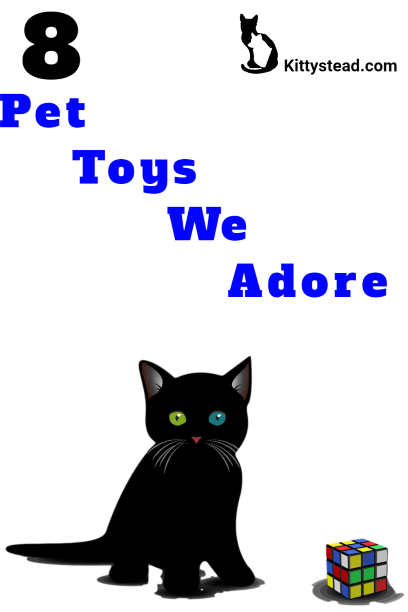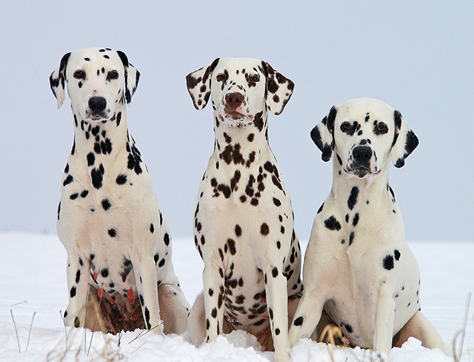A few weeks back we wrote a very informative article called Cat Diet. Since then, we have been studying ways for our furbabies to be more active and healthy. We know that better food for our cats is top of the list of important ways for our loves to live longer. Sadly we learned the cat food we were feeding them is one of the worst cat foods on the market.
A good rule of thumb to see if your cat food is best for your furbaby is to look at the first five ingredients. The example below is what our current food reads as…
Ingredients: Chicken By-Product Meal, Whole Grain Corn, Soy Flour, Whole Grain Wheat, Corn Gluten Meal, and of course the list goes on but we are focused on the first five ingredients.
This post contains affiliate links. We may earn compensation when you click on the links at no additional cost to you.
This cat food offers nothing for your furbaby except for a full belly and possible future health issues. If the first three ingredients are pea protein, soybean meal, corn gluten meal, or other types of plant protein then it is not recommended. Cats require 22 amino acids to stay healthy and can synthesize only 11 of them. The remaining amino acids, called essential amino acids, must come from their food. For this reason, cat food should be at least 30% protein.
But not all protein is equal; each protein source varies in biological availability. Cats thrive on animal protein because it is highly metabolizable and nourishing. Plant protein sources are cheaper and help to round out the guaranteed analysis, but they are less biologically available than animal proteins. Plant proteins and other types of less biologically available protein are processed inefficiently by the body, increasing the burden on the liver and kidneys.
As cats are true carnivores, cats have virtually zero natural carbohydrate requirement. Cats can survive and thrive on a diet with as little as 1-2% carbohydrate calories. Nevertheless, most dry cat foods are between 30-45% carbohydrates. Cat food labeling currently doesn’t display carbohydrate content. The common high carbohydrate ingredients include corn, wheat, potatoes, rice, and oats.
People often assume that because stomachs, intestines, udders, and chicken heads are disgusting to humans, they are equally inappropriate for feline consumption. But this sense of nausea is misplaced and directed by a fundamental misunderstanding of feline nutrition. Cats are predators who eat almost every part of their prey, consuming feet, eyes, noses, fur, and skin that humans would find appalling. It is not the gross factor that should make us avoid by-products.
The problem lies in regulation and management. You will find by-products labeled in a variety of ways, but all fall into two basic categories. The distinction is important. Generic by-products are indicated by vague names such as meat by-products, meat and bone by-product meal, meat by-product meal, and animal by-product meal. Named by-products appear on the ingredient list as chicken by-products, turkey by-products, pork by-products, chicken by-product meal, and so on. While neither type is ideal, generic by-products are worse.
They may include animals who were already dead from euthanasia, diseased animals, or disabled animals on drugs. Though there has been no hard evidence on this, there have been reports of it which starts to plant the seed of this could be a reality? There have been documents throughout time that describes how meat rendering plants source raw materials: Independent plants obtain animal by-product materials, including grease, blood, feathers, offal, and entire animal carcasses, from the following sources: butcher shops, supermarkets, restaurants, fast-food chains, poultry processors, slaughterhouses, farms, and ranches.
We know nothing about the uniformity of biological availability of any by-product. Certain parts of the animal carcass are highly biologically available, while others, like beaks and feet, are virtually non-metabolizable. In other words, animal by-products are an unreliable and inconsistent protein source for your cat.
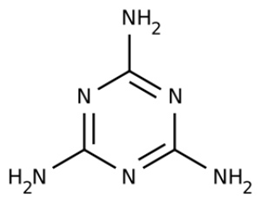
Another issue with non-specific animal content is the potential for introducing allergens to your cat’s food. Animal by-products are made from unspecified parts of unspecified animals. They could contain sheep and beef or may be made with pork that makes your cat sick.
In 2007 Melamine was found in several pet foods that were killing pets that were eating this brand. Melamine is an organic compound with the formula C₃H₆N₆. This white solid is a trimer of cyanamide, with a 1,3,5-triazine skeleton. Like cyanamide, it contains 67% nitrogen by mass, and its derivatives have fire retardant properties due to its release of nitrogen gas when burned or charred.
There is a very good pet food documentary called Pet Fooled that goes over a lot of information. Kidney failure is one of the biggest cat killers, next following obesity. As pet parents, we want to strive to give our kiddos a happy and healthy life. This blog is not meant to scare you but to inform you of the most misinformed market out there.
We will now cover some foods that are considered safe for your pets. Below you will find 3 wet food options and 3 dry food options. If you are like us and have more than one furbaby, wet food can run a big total monthly food budget so be aware. Now granted we know healthy eating is not a cheap option with our furfamily as with our human family but we do what we can for the ones we love, right?
This post contains affiliate links. We may earn compensation when you click on the links at no additional cost to you.
Wet food
Ziwi Peak is a New Zealand based pet food company that uses ethical and sustainable ingredients including meat and seafood sourced 100% from New Zealand. They do offer dry cat food as well. Now with the not so positive news, this wet food will run $8 US dollars a day, Yikes.
Nom Nom is a cat food meal delivery service that makes and sells human-grade food. Each meal is portioned out according to your cat’s weight, age, and weight goals then packed into a refrigerated box and shipped to your doorstep. Nom Nom proudly uses restaurant-quality proteins and vegetables, sourced and prepared in the USA. The subscription also comes with access to animal diet experts. This subscription can run high if you belong to multiple furfamily households averaging around $6 dollars a day for each cat…We have nine felines and our Corgi so that would $54 dollars a day. Yeah, as expected, sadly, we are not going with this one.
Authority Cat Food is the cheapest, healthiest wet food for your cat that we could find on the market. It sells for around $.16 cents a can. That low price is about the same as other common wet food. Unlike many foods at the same price point, it does not contain any animal or poultry by-products. Instead, it is composed of chicken, liver, and ocean fish. Aside from the vaguely named fish, there’s no mystery about what this food is made of. This will run on average for one cat $.96 cents a day, by far the cheapest on the wet food end that we compared.
Dry Cat food
Smalls is a fresh cat food delivery service that uses human-grade ingredients including premium proteins like chicken, turkey, and fish. Choose from minced-style recipes or classic pate to provide your cat with protein-rich, low-carb cat food formulated for cats in all life stages. This can typically run you about $3 a day which makes it the most expensive dry cat food on our list.
Dr. Elsey’s food is primarily made from chicken, egg, pork protein isolate, and other sources of species-appropriate nutrition. While other foods rely on high-carbohydrate binders like corn, wheat, soy, and potatoes, this food uses gelatin as its primary binding agent. It will run around $.80 cents to $1 a day.
Rachael Ray – Now most of us know who Rachael Ray is. Personally, we know her name from her being a chef. She has now moved into the pet food industry making healthy pet food. Her food brand is extremely low-carb food and high in animal fat and other important stuff for your cat. This is not an extremely cheap option but worth checking into. Online we found a 14-pound bag of food is $20 dollars.
We here at Kittystead are going to switch to the Rachael Ray brand. Our deciding factor of all the great options above was we found a good sale of that 14-pound bag for $11. Stay tuned to read about how our 9 kittystead feline lot feels about this switch.
Thank you everyone for reading this week’s blog. We apologize if we traumatized any of you readers about what you are feeding your furbabies. We were shocked! We here at Kittystead love our furbabies and when we did our research we wanted to share some of the options we found because we know you love your furbaby as much as we love ours. There are lots of food choices out there for your love so be sure to read the first 5 ingredients as this will be the main factor in what you are feeding them. Don’t forget to sign up for the Kittystead newsletter for tips, tricks, and follow us on our social media sites for more to come.
